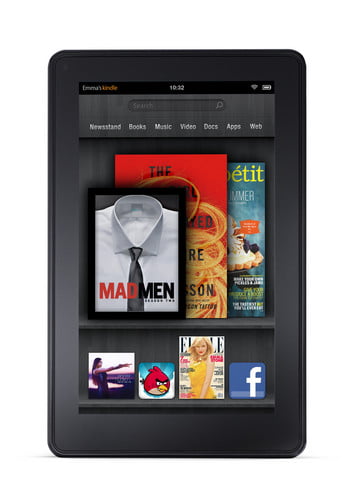Let’s get nostalgic. Remember when Amazon used to be a book company? They were established as the books-only version of EBay. Their audience was comprised of book nerds and students. Then they opened up and started selling electronics and everything else. And the Kindle changed the world a bit, as printed text became less important.
Now, they’re changing it again.
Amazon created a tablet that’s a bit small and doesn’t have much memory, but it’s still going to change things drastically. They’ve just made the tablet accessible. People who couldn’t imagine spending $500 or more on a tablet will now be able to drop less money on it than an iPod. The fact that the Kindle Fire is coming out in November isn’t a happy accident—it’s practically guaranteed to be on every Christmas list.

Of course, it goes beyond affordability. Let’s face it, if Walmart came out with a branded tablet for the same price, about 100 people would buy it. Kindle is a brand that’s trusted for innovation, stability and quality. When Amazon says they’ll build more apps for something, you know they’re going to follow through. Chances of them abandoning a project a la the HP TouchPad are slim to none, and consumers trust that.
Here’s what it won’t do: it won’t kill the iPad. It’s not even looking at the same market share. Let’s face it, the iPad is cool enough that if you wanted one and could afford it, you would have it already. The Kindle Fire is aimed at people who either are only moderately interested in a tablet or those that would love to have an iPad and just can’t afford it. It has half the memory of an iPad, no camera, and is missing two inches of screen size.
The closest competitor to the Fire is actually bookstore rival Barnes and Noble’s Nook Color. The Nook Color has almost entirely the same specs, except that it has a single-core processor where the Fire has a dual-cored. There is also a price difference, with the Fire selling for $50 cheaper. The Fire works from the Amazon Android App store, so there are about 15,909 more apps available. The biggest difference, though, is marketing. When people think of tablets, they don’t think of the Nook Color. Android has kept the Kindle name while making it very clear that the Fire is a new animal.
Because of the price difference, expect to see kids carrying around school-funded Fires instead of iPads. The Amazon Marketplace already supports textbook rentals and even library rentals. The best part, of course, is that renting through Amazon gives you page numbers that correspond to the actual physical books and you can make notes through Whispersync.
Honestly, though, the Kindle for $79 can let you read downloaded textbooks too. So what makes it worth the extra money for educators? It’s because of the ability to use apps and browse the internet. They can test students via a pre-downloaded app, let students take practice quizzes and show videos in the classroom. Suddenly, online training via a tablet is possible and affordable.
At the same time the Fire has made waves, the prices have dropped on all of the Kindle e-readers. There are eleven different price points, ranging from $79-$199 for the Fire. They are separated out by controls, essentially. One uses a touch screen, another has a keyboard, and the cheapest version has a single button. Scoliosis will soon be a thing of the past with so many options available.


